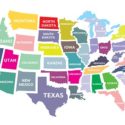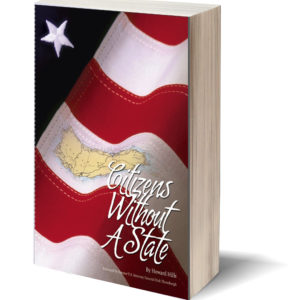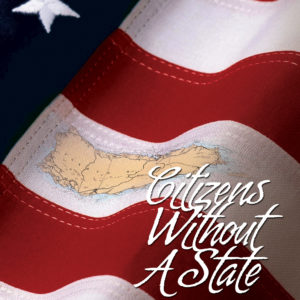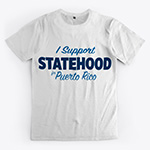The original 13 British colonies that rebelled against England in 1776 and won independence for our nation were eligible to become states under the Articles of Confederation, which created the democratic government of the people during and after the Revolutionary War. This war ended in 1783.
In 1787 the Constitutional Convention in Philadelphia proposed the Constitution of the United States to replace the Articles of Confederation, and those same 13 former colonies became the first 13 states in the Union by following the procedure required for ratification of the Constitution in 1789-1790.
States formed after the colonies
Since the first 13 states ratified the Constitution, 37 new states have been added by Congress. The Constitution gives Congress the power to admit new states to the Union. Four states have been carved out of the original 13 states, which required consent of the state legislature concerned:
- Vermont was formed from New York (1791)
- Maine from Massachusetts (1820)
- Kentucky from Virginia (1792)
- West Virginia from Virginia(1863)
Texas was an independent Republic that was admitted to statehood in 1845.
Territories
The remaining 32 states were territories claimed or acquired by the United States and governed by the federal government until admitted to the Union in accordance with the Northwest Ordinance tradition for the transition of U.S. citizen populated federal territories to statehood.
The legal and political process for integration of lands west of the 13 original states was an issue dating back to the British colonial period. The Northwest Ordinance was enacted under the Articles of Confederation in 1787 to provide for integration of the territory Northwest of the Ohio Rivers which was claimed by the new American nation.
When the First Congress of the United States convened under the Constitution it re-enacted the Northwest Ordinance as the first U.S. territorial organizational statute or “organic act” for the territories that would become Ohio (1803), Indiana (1816) and Illinois (1818). Beginning with Tennessee in 1796 until the admission of Hawaii in 1959, the principles for temporary government of territories, application of the Constitution and for formation of a democratic government embodied in the Northwest Ordinance became a traditional model under which all federal territories inhabited by U.S. citizens and comparable to other states were admitted to the Union.
Puerto Rico
The United States currently has 14 territories. Five are populated. Of the five, Puerto Rico is the most populous, though the Virgin Islands have enough residents to become a state under the traditional standards, which require 60,000 inhabitants.
Puerto Rico has officially requested statehood. There have been three votes on political status in Puerto Rico during the 21st century. All three returned statehood as the preferred status. The House of Representatives has passed a Puerto Rico Status Act calling for one more referendum among independence, statehood, and free association.
Now the ball is in Congress’s court. After more than a century of territory status, Puerto Rico needs and deserves a permanent, non-colonial political status. A status act should be introduced in the new Congress. Please contact your legislators and let them know that you want and expect this action from them.








6 Responses
[…] first territorial organic law was the Northwest Ordinance, which established the Northwest Territory. The Northwest Ordinance was first passed by the […]
[…] been some separatist movements in states very serious and determined to make sections of states become new states themselves: including Vermont, Maine, Kentucky, and West Virginia. It wasn’t always easy […]
THEY SHOLD VOTE FOR STATEHOOD, BECOME A STATE, THATS THE ONLY SOLUTION. THEY WILL HAVE SAME RIGHTS AND BENEFIT AS A ANY OTHER STATE.
Puerto Rico voters voted for statehood in 2012 and 2017. Please remind your congresspeople that they have to take the next step.
All of them came into the union under totally different circumstances and PUSHED by “AMERICANS”. Puerto Rico has been since 1902-20 under TOTALLY different REASONS part of the US, PUSHED by economic reasons from AMERICANS investors… not looking for the BENEFIT of the Puerto Ricans but for their OWN FINANCIAL benefit. The main reason for SCOTUS invention of their “Unincorporated Territory”. The question we MUST ASK is WHEN our people get together and DEMAND OUR EQUALITY. The plebiscites the Statehooders have won in reality, EVEN THOUGH LEGAL were nothing to brag about. Even with the 60+% and the 90+% because of the LOW TURNOUT and because when you put together the PPD’s blank votes, those that voted for Free Association and y add to that the PIP votes, they ADD for much more than the Statehood vote. in addition to a very LOW TURN OUT of voters. PUERTO RICO, Puerto RICANS MUST UNITE and had a true DECOLONIZATION Plebiscite Statehood, vs Independence (full or free associated). NOT the so call “Statehood YES or NO” that the present Governor is saying they will have in 2020. A Plebiscite that the “NO”, MOST LIKELY WIN. Killing any chance of Statehood FOR A VERY LONG, LONG TIME.
If Puerto Rico were to abandon old, tired, and failed Spanish-colonial style laws and language, they would be in more of a position to be considered as a legitimate state, on the same competitive level as the others. Make the institutional and structural changes to foster success. The USA would be falling over themselves to add them to the fold.